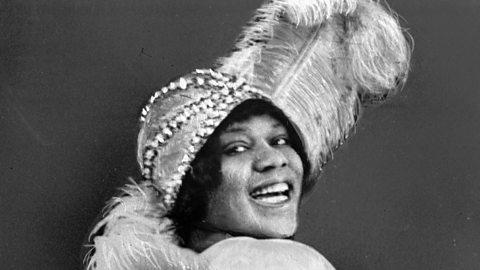Popular music and culture
Some referred to the 1920s as The Roaring TwentiesA period during the 1920s when people enjoyed cultural and economic developments.. At the time, business was booming - many Americans were developing a taste for a new, faster lifestyle. Modern music became popular as a result of developments in the media (radio, records and films). Some people had more money to spend and more time to listen to the music of the time.
The development and impact of jazz music
Jazz originated in the southern states of the USA in the early 1900s. It was a mix of brass band marches, ragtime, blues and gospel. Many young people had had enough of their parents' old dances, eg the waltz.

Jazz was much more rhythmic and lively, and it was easy to dance to. This led to some young people smoking, drinking and, according to some, behaving indecently. College students, especially, were willing to challenge their parents' values and lifestyle.
A number of black musicians became very famous, including Louis Armstrong and Bessie Smith, the 'Empress of the Blues'. But racism was still a major problem during this period. When Bessie Smith had a serious car crash in 1937, she was taken to a hospital that was for white people only. The hospital refused to treat her because she was black and she died.
The impact of the radio and gramophone
Listening to the radio was arguably the most popular form of entertainment. Mass production, the spread of electricity and buying on hire-purchase meant that approximately 50 million people, that's 40 per cent of the population, had a radio set by the end of the 1920s.
- Not everyone could read, so the radio became a very important means of communicating news and information to the people.
- As the popularity of jazz increased, more people bought radios, records and gramophones so that they could listen to jazz any time they wanted to.
- People could also listen to their favourite team taking part in sports matches, especially if it was not possible for them to travel to the game or if they couldn’t afford the cost.
- The radio was able to grow and succeed because companies paid to advertise their products on the medium.
Dancing and the speakeasy culture
More daring dances became popular after World War One.
- These resulted from swing dancing that developed alongside jazz music, and so black people had a huge influence.
- Dances such as the Charleston and the Black Bottom became very popular with young people.
- Because many of these new dances were sexually suggestive, parents were shocked by their children’s enthusiasm to dance them.
- The Lindy Hop also became a popular dance – this dance honoured Charles Lindbergh for crossing the Atlantic in an aeroplane in 1927.
- Jazz had been prohibited in a number of cities, for example New York and Detroit. So, the performances moved to the speakeasies, making the young people even more determined to rebel.